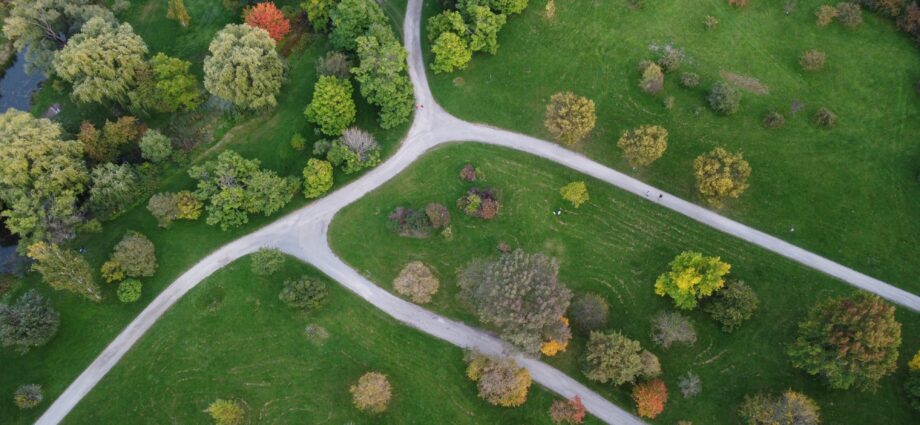
Different ways are used to green cities but the most recent and successful is the Miyawaki Method, the brainchild of a Japanese botanist, that has led to the creation of 3000 micro-forests worldwide
January 3, 2023
As urban areas continue to sprawl, the need for nature preservation is at an unprecedented level of urgency. While such preservation certainly includes human retreat from nature, ideas are also emerging around inviting nature into urban environments.
These creative takes on environmentalism posit that urban and natural environments are not mutually exclusive.
With increasing momentum, technological advancements are being made which promise to help us clean our environments and live more sustainably, but some of the answers to a healthier earth have existed in nature since its very beginning.
Nature is regenerative and self-regulating – how can we harness its power to remedy environmental damage?
Most of us recall the basics of photosynthesis from middle school biology: carbon dioxide in and sunlight in, sugars and oxygen out. On this simple basis, more and more efforts are being made to increase the number of plants in cities to clean urban air.
Different approaches to ‘greening’ cities are being developed, and one example is the Miyawaki Method. It follows the teachings of famous Japanese botanist Akira Miyawaki, whose expertise was in restoring the natural vegetation of resource-depleted land. Trees planted in line with this method of forestry are said to grow at much higher rates, taking only 20-30 years to mature as opposed to 150-200 years.
Miyawaki is said to be effective regardless of climate and soil conditions, and it has led to the successful creation of over 3000 micro-forests worldwide.
Miyawaki’s tenets
- Potentially natural vegetation
Miyawaki’s fundamental principle is to use ‘potentially natural vegetation’ (PNV), which is vegetation that would occur in that area if not for human intervention. Note that this may extend beyond the vegetation that does naturally occur at that point in time.
- Dense cultivation
Seedlings are planted at a high density: 20,000 to 30,000 seedlings per hectares as opposed to the standard 1,000 per hectare in commercial forestry. As a result, the young plants must compete with each other for light, forcing them to grow at a much faster rate than normal. Usually, trees grow around 1 metre per year. Miyawaki trees grow about 10 times faster.
- Layer!
A wide variety of species are planted at four levels in a Miyawaki forest: canopy trees, sub-canopy trees, shrubs, and the floor-level herbaceous layer. This mimics the interactions between organisms that naturally occur in a natural forest ecosystem.

Research from the Dutch University of Wageningen has shown that these fast-growing forests have up to 18 times more biodiversity than their neighbouring woodlands. This makes them especially effective tools for healing damaged and depleted ecosystems.
Furthermore, such forests can help to reduce the temperature of urban areas. Buildings tend to absorb and re-emit the sun’s heat (the ‘heat island effect’), while plants reduce heat. This is because trees provide shade, but also because plants transpire – just like humans – releasing moisture which cools the air around them.
Species diversity allows the forests to store around 40 times more carbon than single-species plantations, and attracts more insect species, which in turn attracts more bird species, et cetera.
Carbon sequestration and the absorption of other air pollutants are obvious winners in the list of benefits of rewilding. These man-made ecosystems also replenish previously depleted soil with nutrients.
Surprisingly, the forests can also help in mitigating the effects of natural disasters. Root systems solidify the ground, stabilising slopes and helping to prevent landslides.
Miyawaki also envisioned his forests as protection against tsunamis. He posited that potentially natural vegetation would grow deeper and stronger roots than non-PNV, and that in combination with the density of Miyawaki forests, when planted along the coast, would absorb a significant portion of the shock of a tsunami. Miyawaki’s position is backed by several studies.
Disciples of Miyawaki
Various organisations have followed Miyawaki’s tenets and his approach to forestry has been implemented across the globe.
Shubhendu Sharma is one of them. After testing Miyawaki’s method in his own back garden in Kashipur, India, he was so impressed with the success of his tiny forest that he quit his engineering job at Toyota. His work became the forestation company that he started in 2011, Afforest, which has since planted over 450,000 trees in ten countries across various continents.
Sharma’s mission is one of regeneration, to restore ‘everything that has been lost to agriculture, monoculture, cities, lawns. Until those small patches have been restored, the work doesn’t stop,’ he says.
The Miyawaki wave is only one example of rewilding efforts. For example, a suburb of Sydney, Australia, has installed vertical hanging gardens on its buildings which house 35,200 plants of 383 different species.
A similar striking building can be seen in Milan, Italy. Called “Bosco Verticale” (roughly translates as “vertical forest”) it was created in 2014 by Studio Boeri, an architectural firm, with a combination of 800 trees and 5000 shrubs.
Vertical and rooftop gardens are a clever solution for areas so densely populated that there is no space for in-city forests.
![Sony PlayStation Store 110 - Sony, [Digital]](https://i0.wp.com/i5.walmartimages.com/asr/5d3e8d52-3525-4e75-b862-10394c67a31c.c3f21de9f6a2f65537248191772f43b3.png?w=1380&ssl=1)
This is only the beginning. Humans have caused depletion and pollution to such an extent that cessation of these practices is not enough. The rewilding of built up areas is indispensable to the healing of the environment.
Subscribe to our newsletter.
We need regeneration. And nature knows exactly how to do it.
This article was originally published on IMPAKTER. Read the original article.

